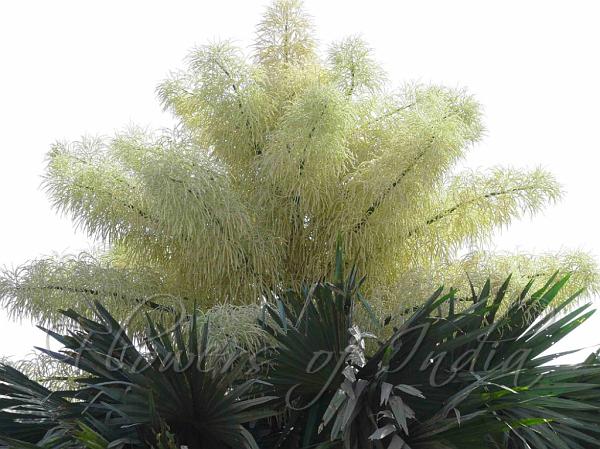|
| Talipot Palm |
|

|

| File size | 181180 |
| Original date | 5/23/07 10:21 PM |
| Resolution | 1050 x 787 |
| Flash | Flash did not fire, auto |
| Focal length | 39.8mm |
| Exposure time | 1/200s |
| Aperture | 5.6 |
| Focus Distance | |
| Metering Mode | Multi-segment |
| Camera make | Panasonic |
| Camera model | DMC-FZ50 |
| Sensor type | OneChipColorArea |
|
|
|
Photo: |
Botanical name: Corypha umbraculifera Family: Arecaceae (Palm family)
Native to South India and Srilanka, Talipot Palm is one of the largest palms
in the world; individual specimens have reached heights of up to 25 m, with
stems up to 1.3 m in diameter. It is a fan palm
with large palmate leaves up to 5 m in diameter, with a petiole up to 4 m, and
up to 130 leaflets. The Talipot palm bears the largest inflorescence of any
plant, 6-8 m long, consisting of one to several million small flowers borne on
a branched stalk that forms at the top of the trunk. The Talipot palm is
monocarpic, flowering only once, when it is 30 to 80 years old. It takes about
a year for the fruit to mature, producing thousands of round yellow-green
fruit 3-4 cm diameter, containing a single seed. The plant dies after
fruiting. The Talipot palm is cultivated throughout southeast Asia, north to
southern China. Historically, the leaves were written upon in various
Southeast Asian cultures using an iron stylus to create palm leaf manuscripts.
The leaves are also used for thatching, and the sap is tapped to make palm
wine.
| Identification credit: Kiran Srivastava | Photographed in Mumbai, Maharashtra. |
• Is this flower misidentified? If yes,